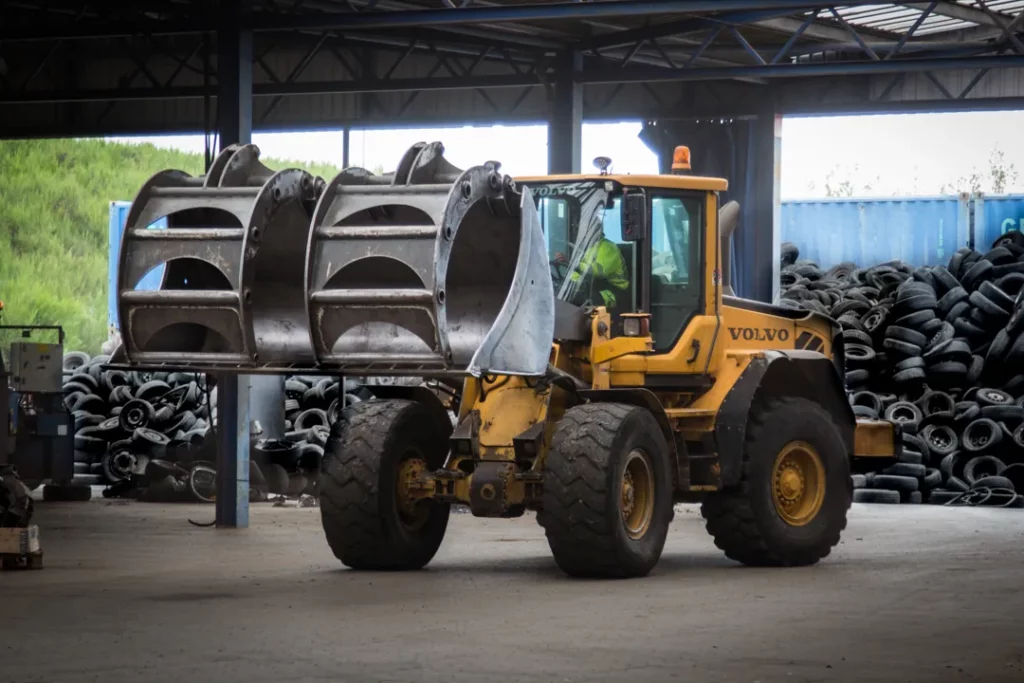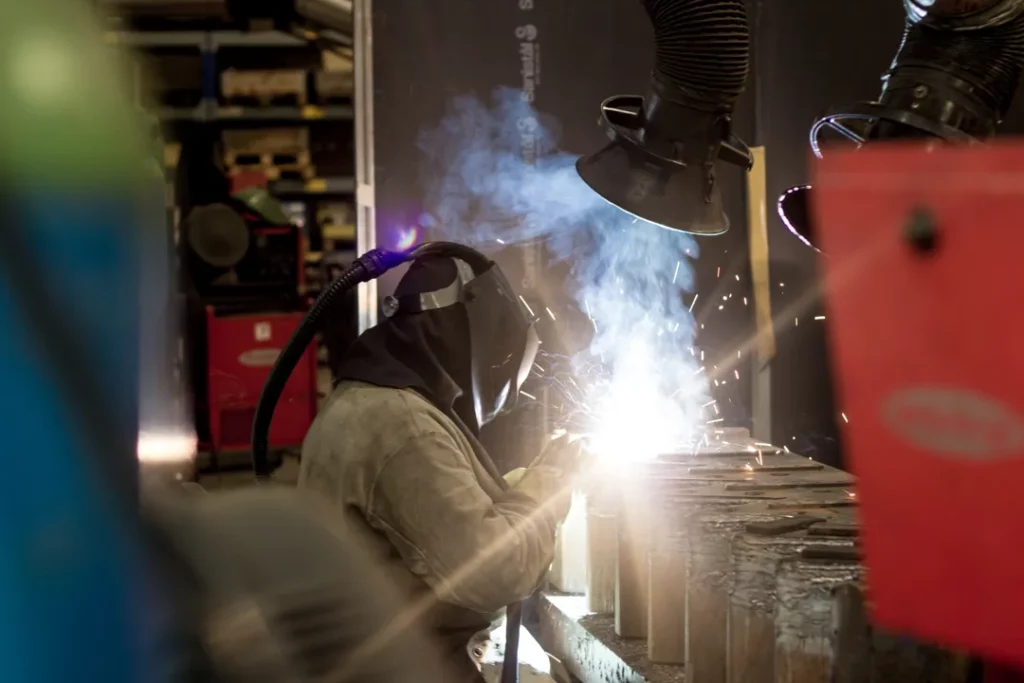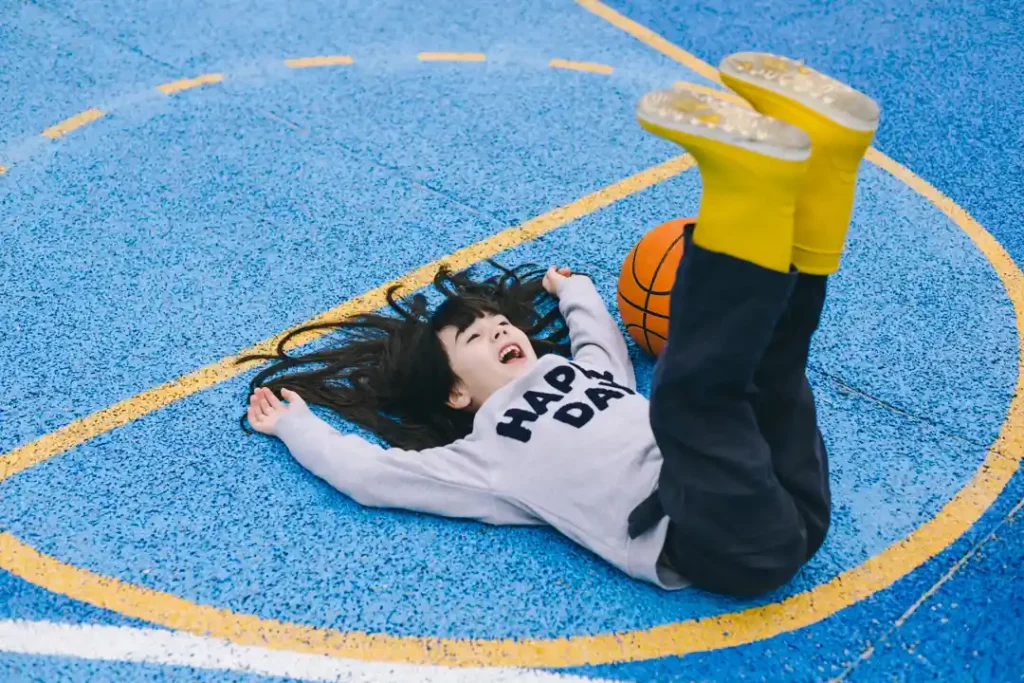Last Updated on 18.09.2024 by hrushetskyy
Millions of tires are discarded yearly, creating a significant environmental challenge. However, efforts to recycle tires mitigate waste and transform them into valuable resources. In this article, we’ll explore how automobile tires are recycled and see what is behind this “fashionable” word. By understanding the intricacies of tire recycling, you can appreciate the importance of this process and perhaps even contribute to a more sustainable future.

Scrap tire hazards
Tire waste poses serious environmental risks. Discarded tires occupy massive space in landfills, and their non-biodegradable nature means they remain intact for centuries. The sheer volume of waste is staggering; in the United States alone, approximately 300 million tires are discarded yearly. This statistic highlights the urgent need for effective tire recycling solutions.
According to the U.S. Tire Manufacturers Association’s 2021 report “2021 US Scrap Tire Management Summary”, there were 1 billion tires stored in stockpiles in the U.S.! But today, this number is reduced by 94% with about 50 million “more stockpiled tires still to go,” thanks to multiple scrap tire recycling programs. Besides them, most states implement a Scrap tire fee collected upon the checkout of new tires in the tire shop. The money collected from this “Tire tax” funds the recycling initiatives in the states. And that’s why we have the number of stock piles reducing annually.
The current rate of scrapping tires is 1.1 per person per year, about 300 million tires annually. Most tires are put into landfills, and recycling is the only way to eliminate the further Earth’s contamination.

Abandoned tire piles pose significant environmental and health risks. They can become breeding grounds for pests and increase the risk of tire fires, contaminating the environment with toxic chemicals.
In addition to occupying landfill space, improperly disposed tires create breeding grounds for mosquitoes and other pests. This is particularly problematic in warm, humid states.
Tire fires pose a significant threat to the well-being of all living beings. Tires are composed of various materials, including synthetic rubber, steel, and textiles, which release toxic chemicals when burned. Tire fires are difficult to extinguish and can burn for extended periods, releasing noxious fumes into the air and contaminating soil and water sources. These fires not only endanger human health but also have long-term environmental consequences.
7 key dangers of scrap tires
- Create breeding grounds for mosquitos and other insects that can carry dangerous viruses
- Scrap piles become home for rodents, snakes, ticks, and other potential vectors
- Stockpiles catch fire easily, can burn for months, and are almost impossible to extinguish
- Tires take up much space, causing illegal dumping in such areas as woods and rivers
- Piles of scrap rubber can cause workers to be injured or killed: the tires can roll and fall on people
- Rubber can pollute groundwater with toxins if put into the ground, causing dramatic consequences for its inhabitants
- Tires can trap gases, such as methane, creating a danger of them becoming buoyant or getting out to the surface.
Why recycling tires is important

Large volumes of scrap tires pose a significant environmental hazard, and recycling them is the only way to change this drastic situation. Thanks to multiple initiatives, about 90% of used tires are being recycled today. There are many ways to use recycled tires, starting with highway surfacing and tire-derived aggregate fuel, from kids’ playground flooring to sports tools.
Besides, using recycled rubber creates 4-20 times smaller carbon footprints than using virgin plastic resins. Recycling car tires helps to create many innovative products that improve our lives and prevent further environmental pollution.
Getting to the recycling facility: scrap tire collection and transportation
The first step in recycling tires is collecting waste tires. Used tires are gathered from tire retailers, service centers, and special collection events. Tire retailers and service centers are often the initial point of contact for consumers looking to dispose of old tires. You can easily find “Tire recycling facility near me” by Googling it. Plus, many retailers offer tire recycling programs as part of their services, making it convenient for customers to recycle their tires responsibly.
Many states organize special tire collection events. These events encourage proper tire disposal and are organized in collaboration with local governments, environmental organizations, and recycling companies. As a used tire owner, this is a wonderful opportunity to drop off your old tires, knowing they will be 100% transported to a recycling facility.
This transportation process is carefully managed, and the tires are handled safely and efficiently. Specialized vehicles equipped to handle large quantities of tires are used for transportation. Once tires get to the recycling plant, they are processed to get a second life.
Tire recycling process

Recycling begins with an initial inspection and sorting when non-rubber components like metal and fabric (steel wires, rims, and weights), a tire shredder breaks down tires into smaller pieces. This is important for the tires to be processed effectively. Removing contaminants and impurities is typically done using mechanical equipment designed to separate the various components of the tire.
After the initial inspection and sorting, powerful machines shred the tires into small pieces. The shredders can break down entire tires into more manageable sizes. Granulation and grinding further reduce the shredded pieces, resulting in granules or powder. This process not only reduces the size of the tire material but also prepares it for various applications.
Two primary methods of tire recycling: cryogenic and ambient processing.
Cryogenic processing involves freezing the tires with liquid nitrogen before breaking them down. This method makes the rubber brittle, allowing it to be shattered into small particles. Cryogenic processing is known for producing high-quality, fine rubber powder that can be used in various applications.
Ambient processing, on the other hand, grinds the tires at room temperature. This method is more energy-efficient and cost-effective. The rubber is mechanically ground into granules, which can then be used in a range of products. Both methods have advantages and are chosen based on the desired end product and specific recycling goals.
The production of crumb rubber from waste tires helps to transform non-resellable tires into a reusable raw material. Crumb rubber is used in different industries, from construction to manufacturing.
Tire recycling process step-by-step

The process of tire recycling involves the following steps:
- Tire collection
Companies that buy used tires from car owners, gas stations, tire shops, etc., resell them to processing plants for further operations - Steel wires removal
Special steel (nylon, other materials) tire wires are inserted in the rubber for resilience. The wire has to be removed beforehand to recycle automobile tires. The revived steel is then used to produce other steel goods, and the rubber moves on to the next stage - Whole tire processing
The plants work on the tires by cutting them into 2-inch pieces and then treating them with chemicals to create fine powder and granules. This step of tire processing can be performed in two ways:
Mechanical
A special machine grinds tires into pieces using the ambient process; a special granulator regulates the size.
Cryogenic
Tires are frozen with liquid nitrogen and broken into crumbs by a hammer mill. Steel particles are removed with a huge magnet, and all other fibers are removed with air classifiers. - Rubber screening
The screening stage is necessary to ensure there are no wires or other contaminants left that can affect the further usage of the rubber. The stage also includes sorting the elements by size or other characteristics of automobile tires are recycled using different methods - Cleaning
All the derived rubber is thoroughly cleaned using water and cleaning substances so it is ready for packaging. The packaged rubber is then sold to any organization that uses reclaimed rubber, powder, granules, or rubber mulch for different purposes.
From tires to playgrounds: end products of recycled tires

The versatility of recycled tire products is impressive, and the demand for these products continues to grow. From construction materials to consumer goods, recycled tires find applications in various industries, contributing to a circular economy and promoting sustainability. Shredded tires can be transformed into a variety of useful products.
1. Tire derived fuel (TDF)
One common application is Tire-Derived Fuel, which uses tires as an alternative energy source in industrial processes. TDF is a valuable resource for industries such as cement manufacturing, pulp and paper mills, and power plants. The high energy content of tires makes them an efficient and cost-effective fuel option.
2. Rubberized surfaces
Ground rubber from recycled tires and rubber mulch are also used in playground surfaces, sports fields, garden beds, and rubberized asphalt. Additionally, recycled tire material is molded into new products such as mats and flooring. The end products are beautiful and modern, showing many safety and performance benefits. For example, playground surfaces made from recycled rubber have cushioned and impact-absorbing surfaces, reducing the risk of injuries. If you’ve been to one of those with your kids, you know how pleasurable and aesthetically looking they are! (Plus, you worry less.) Rubberized asphalt, used in road construction, makes pavement durable and significantly reduces noise.
3. New tires
Yes, new tires can be produced from the used ones! By incorporating recycled rubber into new tire production, manufacturers reduce their reliance on raw materials and minimize their environmental footprint.
Tire recycling also has implications for tire wear and maintenance materials, allowing for repurposing materials that would otherwise contribute to accelerated tire wear.
For the better future: benefits of tire recycling

Tire recycling has manifold benefits.
Environmentally, it reduces landfill waste and conserves natural resources. By diverting tires from landfills and repurposing them into valuable products, tire recycling helps mitigate the environmental impact of tire disposal. Reducing landfill waste also extends the lifespan of existing landfill sites, reducing the need for new landfill development.
Economically, tire recycling creates jobs and offers cost savings for industries using recycled materials. The recycling industry provides employment opportunities in collection, transportation, processing, and manufacturing. Additionally, using recycled materials can be more cost-effective than sourcing new raw materials, leading to potential business savings.
Communities benefit from cleaner, safer environments free from tire waste. Proper tire disposal and recycling reduce the risks associated with tire fires, disease-carrying pests, and environmental contamination. Cleaner communities contribute to improved public health and overall quality of life.
Tire recycling promotes a culture of sustainability and environmental responsibility. By raising awareness about the importance of recycling and encouraging individuals and businesses to participate, we can collectively positively impact our planet.
Challenges in tire recycling

Despite its advantages, tire recycling faces many challenges. Contaminants and impurities in the tires can complicate the recycling process. Tires may contain metal, fabric, and other materials that must be removed before recycling. This additional step requires specialized equipment and adds to the overall cost of the recycling process.
The cost and energy consumption involved in recycling can also be significant. While tire recycling offers long-term environmental benefits, the initial investment in equipment, transportation, and processing can be substantial. Balancing the costs with the economic and environmental benefits is a challenge that recycling companies must navigate.
Market demand for recycled products also fluctuates, affecting the viability of recycling operations. The success of tire recycling depends on the availability of markets for recycled materials. When demand for recycled products is high, recycling operations can thrive. However, market demand fluctuations can impact recycling businesses’ profitability and sustainability.
To address these challenges, ongoing innovation and collaboration are being constantly promoted by different government and commercial organizations. Research and development efforts are focused on improving recycling technologies, improving the quality of recycled materials, and expanding the range of applications for recycled tire products. State policies and incentives can also play a role in supporting tire recycling initiatives and promoting market stability.
Innovations and future trends

The future of tire recycling looks promising with advances in recycling technologies and sustainable tire design. Innovations in tire manufacturing are focused on creating more easily recyclable tires. For example, some tire manufacturers are exploring using single-material tires, simplifying the recycling process by eliminating the need to separate different components.
Recycling technologies are also evolving to improve efficiency and reduce costs. Advanced shredding and grinding equipment, coupled with automated sorting systems, improve the precision and speed of the recycling process. Cryogenic processing techniques are refined to produce even finer rubber powders, expanding their potential applications.
Sustainable tire design is another area of focus. Manufacturers are exploring using bio-based materials and renewable resources in tire production. These efforts aim to reduce the environmental impact of tire manufacturing and create tires that are easier to recycle at the end of their life cycle.
As these innovations take hold, tire recycling’s efficiency and economic development are expected to improve. The tire recycling industry is poised for growth, driven by technological advancements, sustainable practices, and supportive policies.
How much are recycled tires worth, and how to earn money for tire disposal?

Starting a tiny tire-collecting side business can get about $100 a day ($1-$40 per tire). You can do this in 3 ways:
Collect tires from gas stations and auto shops
You can drive to local gas stations and auto shops, pick up used AMP tires, and get about $3 per tire.
After you have the tires, contact any company that recycles or retreaded automobile tires and schedule further transportation. If you contact recycling facilities directly, they may charge you a fee of $1 per tire, but you will still earn additional income.
Store tires
You can offer your storage facility to gas stations and auto shops. Most will gladly use such a service because of some issues with storing old tires. For example, according to California law, piles of scrap tires with less than 500 items must be located at least 10 feet from lot lines and buildings. They can be located nearer, but only if an operator considers the fire hazard minimal. It’s inconvenient for auto shops and stations to resolve all these issues.
Besides, some companies will come to pick up your tires from any place if you have at least 100 of them.
Sell your tires
You can sell your old tires to retreading companies in any quantity. The income depends on the company and the number of tires you sell. In any case, you will dispose of your used tires in a way that is helpful for you and the environment.
The best time to sell used tires is late summer to early fall. Retreaders start to work on winter “snow caps” during this time, so they buy more used casings and often even pay more per item.
Tire recycling is a process of stellar importance that offers numerous environmental, economic, and community benefits. Each of us can contribute to a more sustainable future by supporting and participating in tire recycling initiatives. The journey from tire waste to valuable resources is a testament to the potential of recycling to address pressing environmental challenges.
As we move forward, continued innovation, collaboration, and awareness are key to maximizing tire recycling’s benefits. By embracing sustainable practices and making conscious choices, we can ensure that tire recycling remains a vital part of our efforts to protect the planet.
© images courtesy of www.genan.com, www.depositphotos.com, and www.freepik.com
Frequently Asked Questions
Why is tire recycling important?
Tire recycling reduces landfill waste, conserves natural resources, and prevents environmental hazards associated with tire fires and toxic chemicals. It also repurposes used tires into valuable products.
What are the main methods of tire recycling?
The main methods are cryogenic processing, which involves freezing tires before breaking them down, and ambient processing, which grinds tires at room temperature. Both methods have advantages and are chosen based on the desired end product.
What products can be made from recycled tires?
Recycled tires can be turned into Tire-Derived Fuel (TDF), playground surfaces, sports fields, rubberized asphalt, mats, flooring, and even new tires!
How can I contribute to tire recycling?
You can contribute to tire recycling by properly disposing of your old tires at designated collection points: tire retailers, automotive service centers, local recycling facilities, or special collection events organized by local governments and recycling companies. Additionally, you can support tire recycling by purchasing products made from recycled tires and spreading awareness about the importance of tire recycling within your community.
How much can I get if I recycle my tires?
Anywhere from $1 to $40. The amount you can get for recycling your tires varies depending on the condition of your used tires, your region and the recycling facility. Some facilities may offer a small fee or incentive for each tire recycled, while others may charge a nominal fee for tire disposal. It’s best to check with local recycling centers or tire retailers to understand the specific policies and any potential compensation for recycling your tires in your area.
Where can I recycle my tires?
You can recycle your tires at various locations, including tire retailers, automotive service centers, and dedicated tire recycling facilities. Many tire retailers offer recycling programs as part of their services. Additionally, local governments often organize special collection events where you can drop off your old tires for recycling. To find a recycling location near you, Google “tire recycling facilities near me” or contact your local waste management authority.
Share the Knowledge
